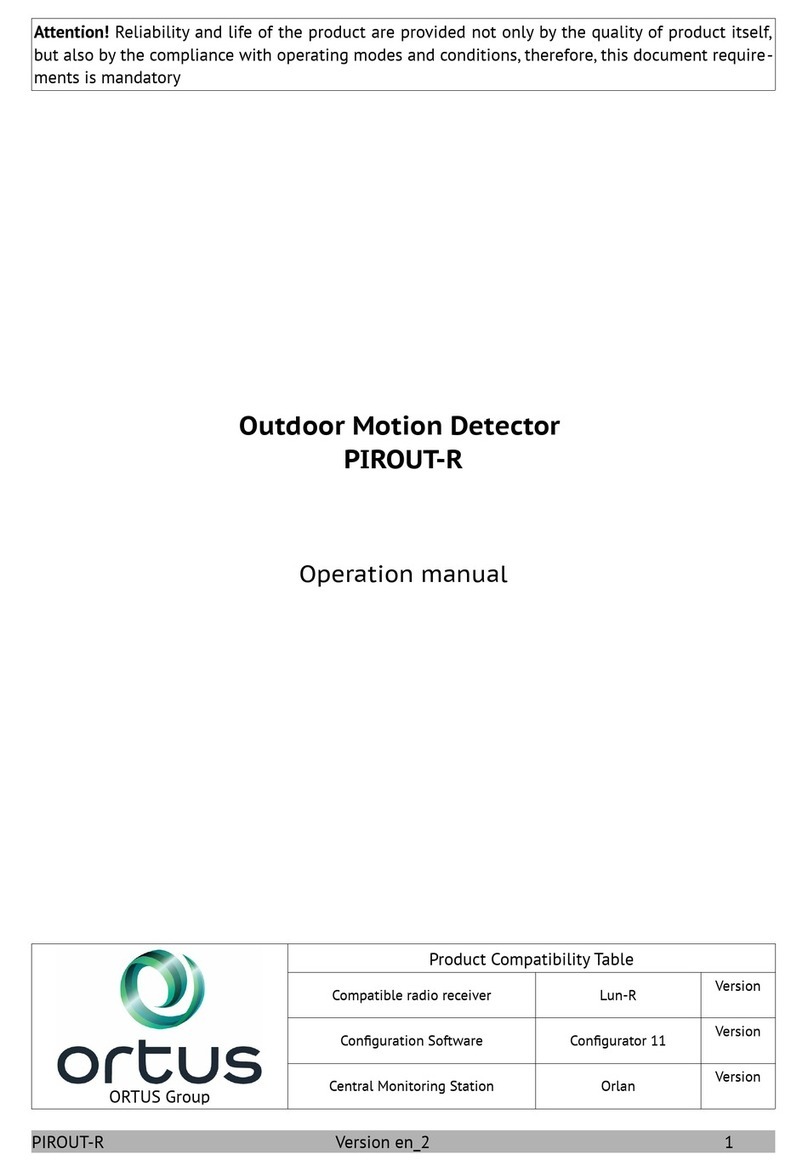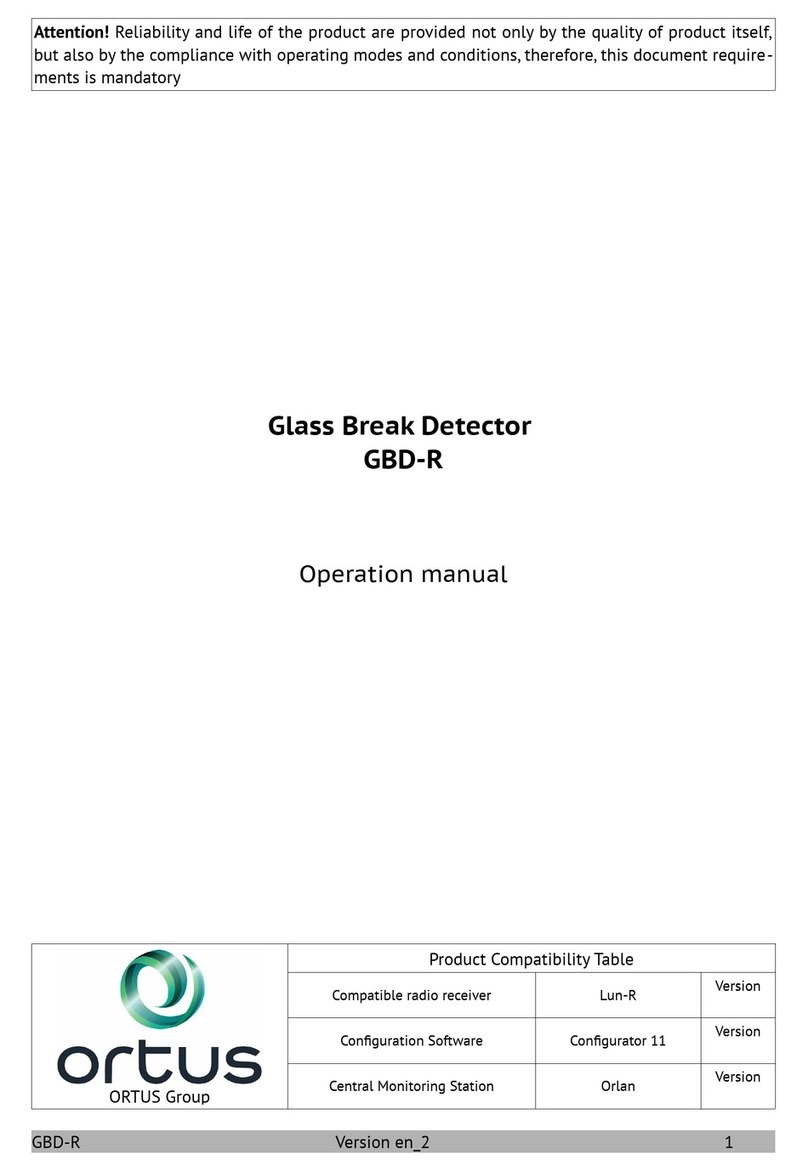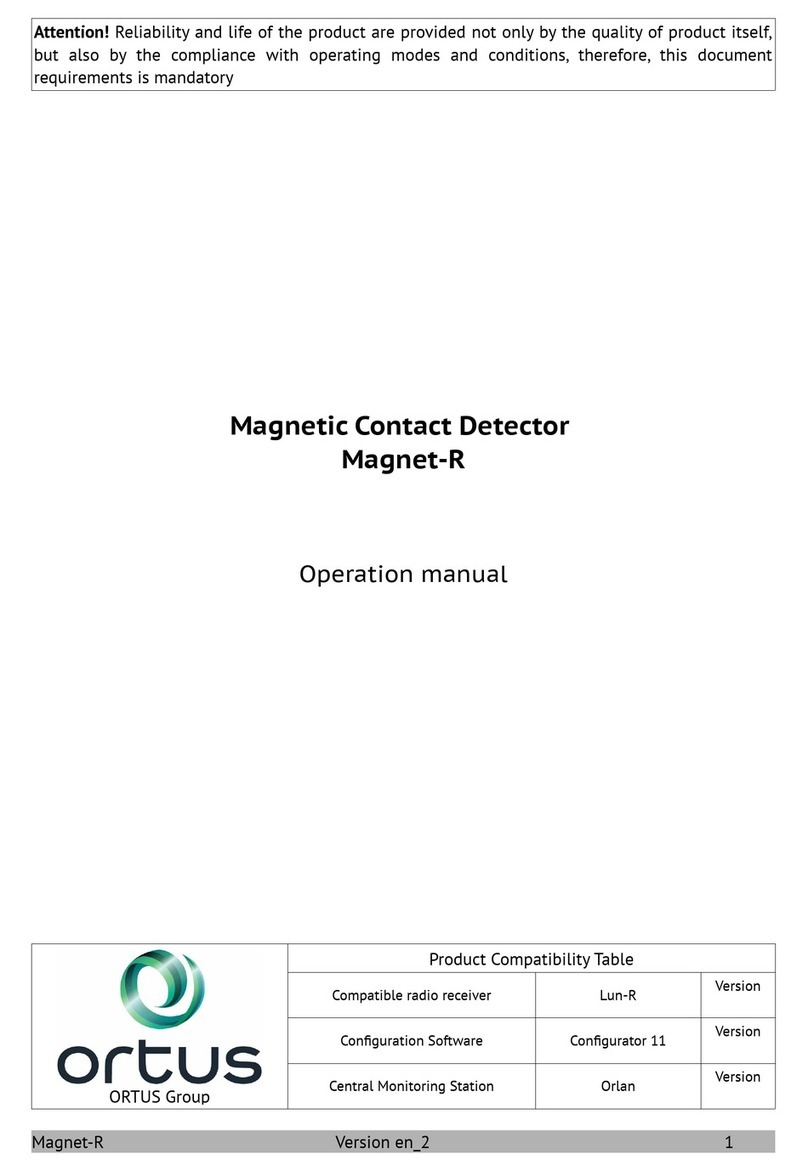The detector design provides protection against insects from entering the housing.
When the communication loss with the receiver, the detector continues to search it. Therefore,
when you turn off the receiver or control panel for a long time, it is recommended to remove the
detector’s battery.
4.1. Modes Indication
The detector modes displays by multicolored LED:
Norm – light off;
Alarm – Kashing red once every 4 seconds – upon the moving people or large animals
(see section 4) are detected. This Kashing will operate up to 15 minutes after the detec-
tor’s cover is closed then Kashing stops to conserve the battery;
Binding – blinking green while waiting for a signal from the Lun-R receiver to register in
the control panel memory;
Bound – when the binding is completed successfully – turning on red for 2…3 seconds.
4.2. Binding
A new detector must be bound to the control panel in order to successfully transmit its com-
mands to the receiver.
To register a detector, do the following:
1. In the control panel con$guration, pre-set the required number of radiozones, their type,
group membership and other parameters;
2. Turn on the control panel in the operating mode and switch to the desired control
panel’s group;
3. Switch the control panel to the wireless detectors binding mode (see the corresponding
control panel programming manual);
4. Install the battery to the detector observing polarity;
5. Switch the detector to the binding mode by short-circuit the R S T contacts for 2…3 sec-
onds (until the blinking green – the signal "Binding");
6. Binding will processed automatically and, if successful, ends by turning on the red LED
for 2…3 seconds (signal "Bound").
The detector waits 70 seconds for binding. To reinitialize the binding process, brieKy close the
R S T contacts again.
4.3. Wireless signal strength
The detector should be in the radio visibility zone of its receiver, therefore, after binding, be-
fore installation at the facility, it is strongly recommended to recognize the wireless signal strength.
To do this, turn on and place the detector and the control panel in the intended installation
locations, and then press and release the tamper button. The detector indicators display the wire-
less signal strength as follows:
L D color Number of blinks Signal strength
Green
3 Best
2 Good
1oor
Red 4 No connection
If the signal strength is poor or there is no connection, it is recommended to change the loca -
tion of the detector and repeat the above process in order to form a reliable reception map.
IR-R Version en_2 5




























